To build a padel tennis court successfully, every element, from the canopies to the net, must be carefully considered. A padel tennis court construction undertaking is a complex project that requires detailed planning, adherence to necessary standards, and collaboration with professional consultants. This guide will take you through the entire process to ensure the court meets both aesthetic and functional requirements.
Understanding Padel Tennis
Padel tennis is a sensational racquet sport that brings together elements of both tennis and squash. Typically played in doubles on an indoor court roughly one-third the size of a standard tennis court, in a sports cage with glass walls and partial fencing, padel tennis promises quick and social play. The use of walls around the court adds an extra dimension to the game. The sport’s growing popularity worldwide has led to an increased request for padel courts.

Planning and Design of the Padel Courts
Site Selection
Knowing where to install padel courts is the pillar of your project.
Keep in mind these tips:
- Accessibility: Ensure that the site to the padel courts can easily be accessed by players and maintenance personnel.
- Leave enough space for the padel courts and additional amenities such as seating and walkways.
- Stable Soil Conditions: Find a spot that has not been saturated with moisture, and is firm enough to hold the weight of your padel courts.
Padel Tennis Court Size and Design
- Consistency is important in all things and there is a standard dimensions to follow when creating:
- Padel Courts Dimensions: 20 meters (length) × 10 meters (width)
- Service Lines: 3 Metres on either side of the net
- Net Height: 0.88 Meter in the Center, 0.92 Meter in the Ends
- Stretch and Advance: If space allows it (8m × 2m) somewhere outside the court.
Orientation and Positioning of the Padel Courts
The following factors should be considered for player comfort:
- Reduces morning and evening sun glare with north-south orientation.
- Wind protection: Use the natural wind blockers or create shields.
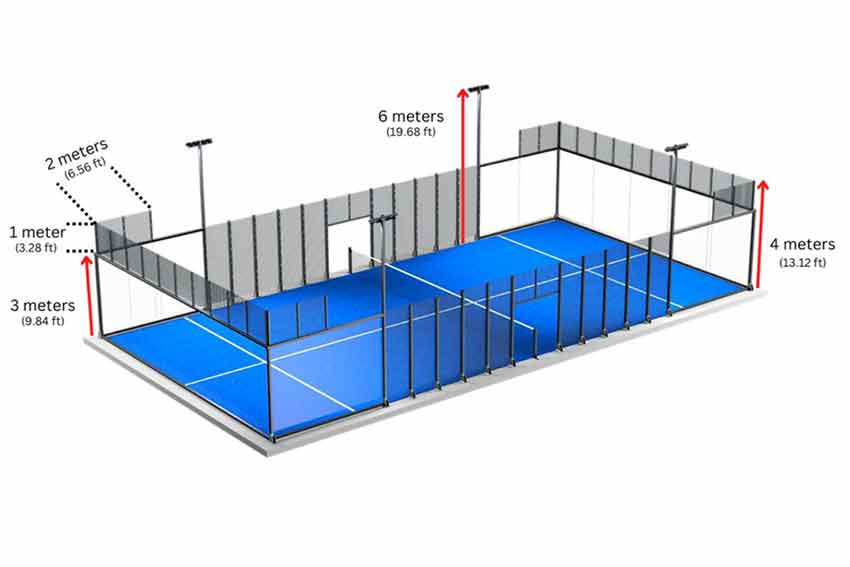
Construction Components of the Padel Courts
Sub-base and Foundation
A stable foundation guarantees the survival of the Padel courts:
- Base layer: Layer of gravel or crushed stone.
- Layers of asphalt: Two layers of 65mm porous asphalt to drain
- Ring Beam: A reinforced concrete structure designed to provide stabilization to the enclosure and prevent the collapse of the structure.
Functional Elements of Enclosure and Rebound Walls
- The enclosure has impacts for game play and safety:
- The lower 3 m shall be 10mm or 12mm toughened glass and the top 1 m welded mesh fencing.
- Support structure: Opt for galvanized steel posts to avoid rusting.
- Access Points: A minimum 1.2-meter gap between the net posts and enclosure for player entry and exit.
Playing Surface of the Padel Courts
Choosing the right surface material affects playability and upkeep:
- Synthetic turf: Offers good traction and ball bounce; comes as fibrillated or monofilament.
- Acrylic systems: very durable, uniform playing surface, available in thicknesses from 1.5 mm to 5 mm.
Lighting and Amenities of the Padel Courts
- Lights: Put floodlights in many different places to extend play hours
- Amenities: Seated areas, shade, water stations for spectator comfort.
Padel Regulations and Standards
Compliance with local and international safety and quality standards:
- Regional Restrictions: Abide by local building codes and zoning laws.
- World Standards: International Padel Federation (FIP) and Lawn Tennis Association (LTA) recommendations.
- Safety Regulations: Ensure conditions like anti-slip surfaces, fencing height, and player access points are met.
- Sustainability: Opt for green building materials and eco-conscious construction methods.
Maintenance and Upkeep of the Padel Courts
Routine maintenance keeps them playing both strong and long:
Daily Maintenance:
- Remove trash, dust, and leaves from playing surface.
- Net tension check & adjust.
Weekly Maintenance:
- Clean sand and redistribute on synthetic turf.
- Transparent glass walls for visibility.
- Check fencing and flooring for minor wear and tear.
- Secure all structural members of the enclosure.
- Refill / replace the infill sand of synthetic grass.
- Make sure lighting systems are functioning properly and well dispersed.
- Tip: One maintenance team should be hired professionally once a year for refurbishment and maintenance to avoid expensive repair work.
Conclusion
Investing to build a padel tennis court is a rewarding opportunity. With good planning, quality materials, and proper upkeep, you can enjoy years of exciting gameplay.
Do you want to improve your Padel Game Plan? For additional insight of the sport and any Padel advice, keep your eyes peeled at PadelGamePlan.com!
FAQ – PADEL IMPROVEMENT
How to get better at padel?
You will need regular practice, hit on the walls and watch matches of professionals. Read this Article – How to play Padel Tennis.
How can I improve my Service?
For more information on Padel Service, please read the Article – Best Padel Serve Techniques
Can I know more about the Rules of Padel Tennis?
Absolutely, for a beginner-friendly explanation of the Rules of Padel Tennis, please have a look at the Article – Rules of Padel Tennis. For Official Rules, please download the official rules of Internatlonal Padel Federation here.
FAQ – PADEL FOR CHILDREN
At what age should children start Padel Tennis for children?
Children as young as 4 can start out with foam balls and mini-rackets. The majority of clubs are for ages 5–15.
How does padel improve teamwork in kids?
Doubles requires constant communication and mutual strategies; collaboration is natural.
Can padel help academically?
Doubles requires constant communication and mutual strategies; collaboration is natural.
What is a good reason why padel is safer than tennis for little kids?
Enclosed courts, slower balls, and lighter gear reduce injury risks significantly.
Is there any competitive padel opportunity for kids?
Absolutely! Try to look for Junior leagues that offer Padel tournaments for under-12 and teen divisions. the positive impact of padel tennis on children
FAQ – PADEL EQUIPMENT
Do I need special padel tennis attire?
Please read the Article – Top Padel Clothing Essentials.
Do you have a checklist of padel tennis essentials I’ll need?
Could you recommend which padel balls I should use?
Please read the Article – Best Padel Balls.
Planning a Padel Tournament?
Use our Free Tool and get the schedule in seconds.
FAQ – PADEL TENNIS COURT
Is it possible to erect a padel court in my garden?
Installation is possible with a minimum area of 10m × 20m, subject to local zoning approval. For more information, Read this Article.
How much the cost of a padel court?
A typical padel court can range from AED 335,000 to AED 1,113,000, depending on materials, location and amenities. See the full cost breakdown here: Article – How much does it cost to build a padel court.
What about lighting required for the padel court – what advice can you give on that?
Please have a read through on the Article – Essential Padel Lighting Tips.

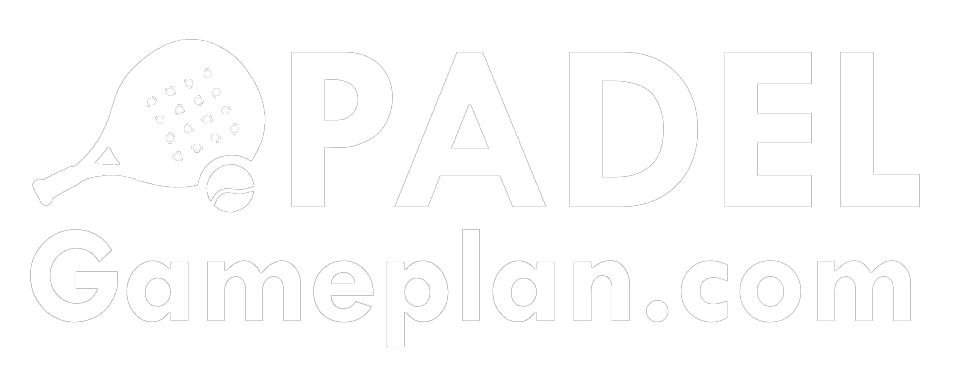

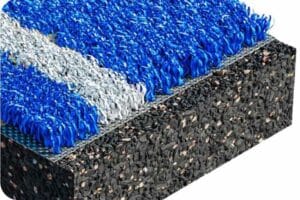


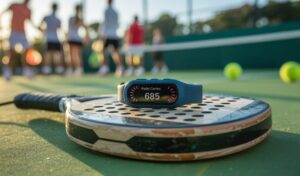
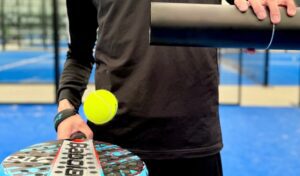

3 Responses